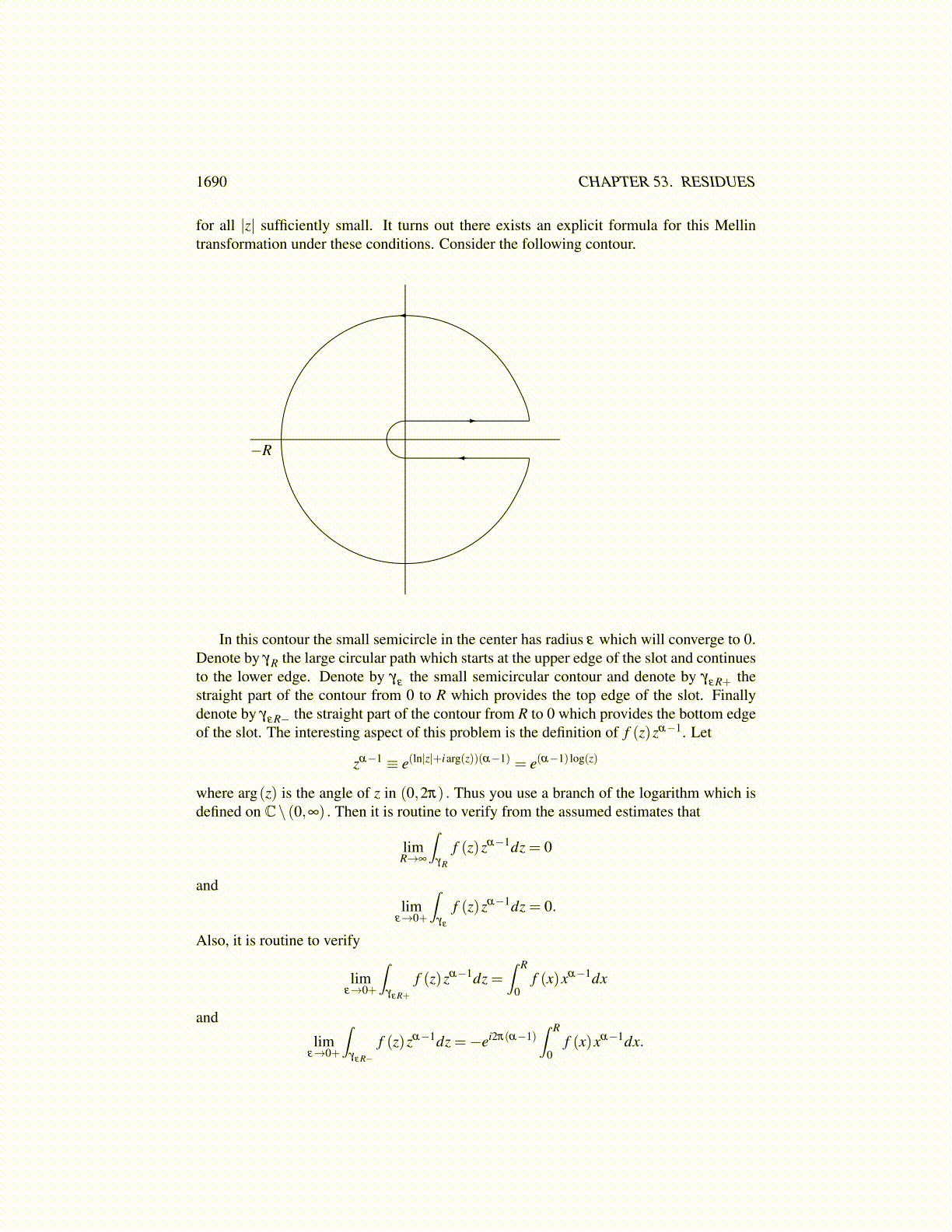
1690 CHAPTER 53. RESIDUES
Res(
f ,−2+√
3)=
limz→−2+
√3
(z−(−2+
√3)) z2 +1
z(4z+ z2 +1)=−2
3
√3.
It follows ∫π
0
cosθ
2+ cosθdθ =
12i
∫γ
z2 +1z(4z+ z2 +1)
dz
=12i
2πi(
1− 23
√3)
= π
(1− 2
3
√3).
Other rational functions of the trig functions will work out by this method also.Sometimes you have to be clever about which version of an analytic function that re-
duces to a real function you should use. The following is such an example.
Example 53.2.9 The integral here is ∫∞
0
lnx1+ x4 dx.
The same curve used in the integral involving sinxx earlier will create problems with the
log since the usual version of the log is not defined on the negative real axis. This doesnot need to be of concern however. Simply use another branch of the logarithm. Leave outthe ray from 0 along the negative y axis and use Theorem 52.2.3 to define L(z) on this set.Thus L(z) = ln |z|+ iarg1 (z) where arg1 (z) will be the angle, θ , between −π
2 and 3π
2 suchthat z = |z|eiθ . Now the only singularities contained in this curve are
12
√2+
12
i√
2,−12
√2+
12
i√
2
and the integrand, f has simple poles at these points. Thus using the same procedure as inthe other examples,
Res(
f ,12
√2+
12
i√
2)=
132
√2π− 1
32i√
2π
and
Res(
f ,−12
√2+
12
i√
2)=
332
√2π +
332
i√
2π.
Consider the integral along the small semicircle of radius r. This reduces to∫ 0
π
ln |r|+ it
1+(reit)4
(rieit)dt